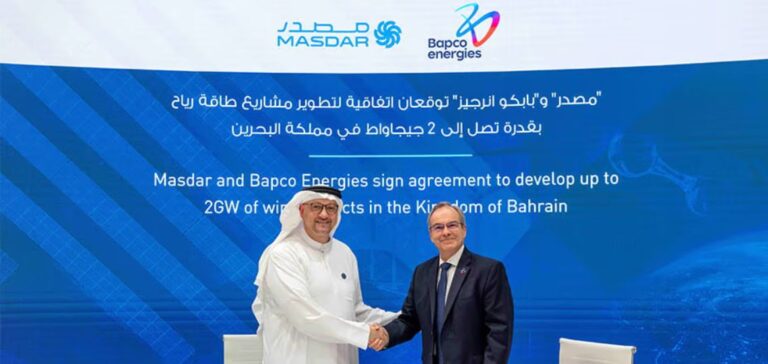The Masdar Group, leader in renewable energy in the United Arab Emirates, has signed an agreement with Bapco Energies, a semi-independent agency within Bahrain’s Ministry of Oil and Gas, to develop offshore and near-shore wind projects in Bahrain. This partnership marks Masdar’s first foray into the Bahraini market and represents the first project of its kind in the Middle East region.
Envisaged impact on Bahrain’s energy strategy
With a projected capacity of up to 2 GW, this clean energy collaboration is designed to accelerate the decarbonization of Bahrain’s key industrial sectors. This project is aligned with the kingdom’s National Energy Strategy, which aims to reduce emissions by 30% by 2035 and achieve net zero emissions by 2060.
Masdar’s expertise and track record
Mohamed Jameel Al Ramahi, CEO of Masdar, emphasized Masdar’s commitment to using its proven expertise and experience to develop wind power projects worldwide. Masdar has already developed several iconic wind power projects, including the 400 MW Dumat Al Jandal wind farm in Saudi Arabia, the 630 MW London Array project in the UK, and the 103.5 MW wind power program in the United Arab Emirates.
Masdar’s commitments and future initiatives
In line with the Emirate’s overall strategy, Masdar is targeting a renewable energy portfolio capacity of 100 GW by 2030 and aspires to become a leading producer of green hydrogen in the same period, while supporting the overall goal of tripling renewable capacity by the end of the decade.
The agreement between Masdar and Bapco Energies for the development of 2 GW wind power projects in Bahrain represents a major step forward in the kingdom’s energy transition, positioning Bahrain and Masdar at the forefront of the transition to renewable energies in the region.






















